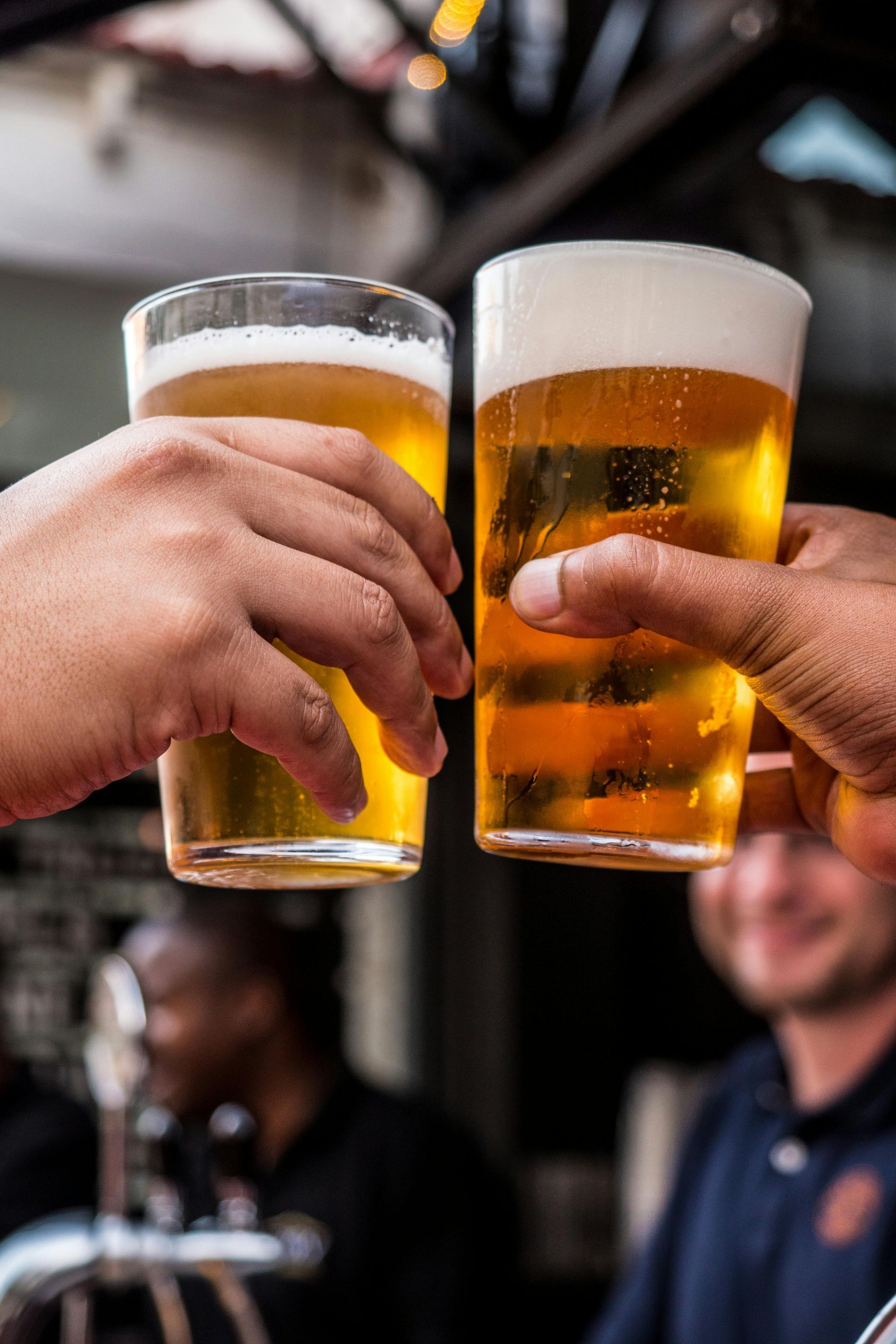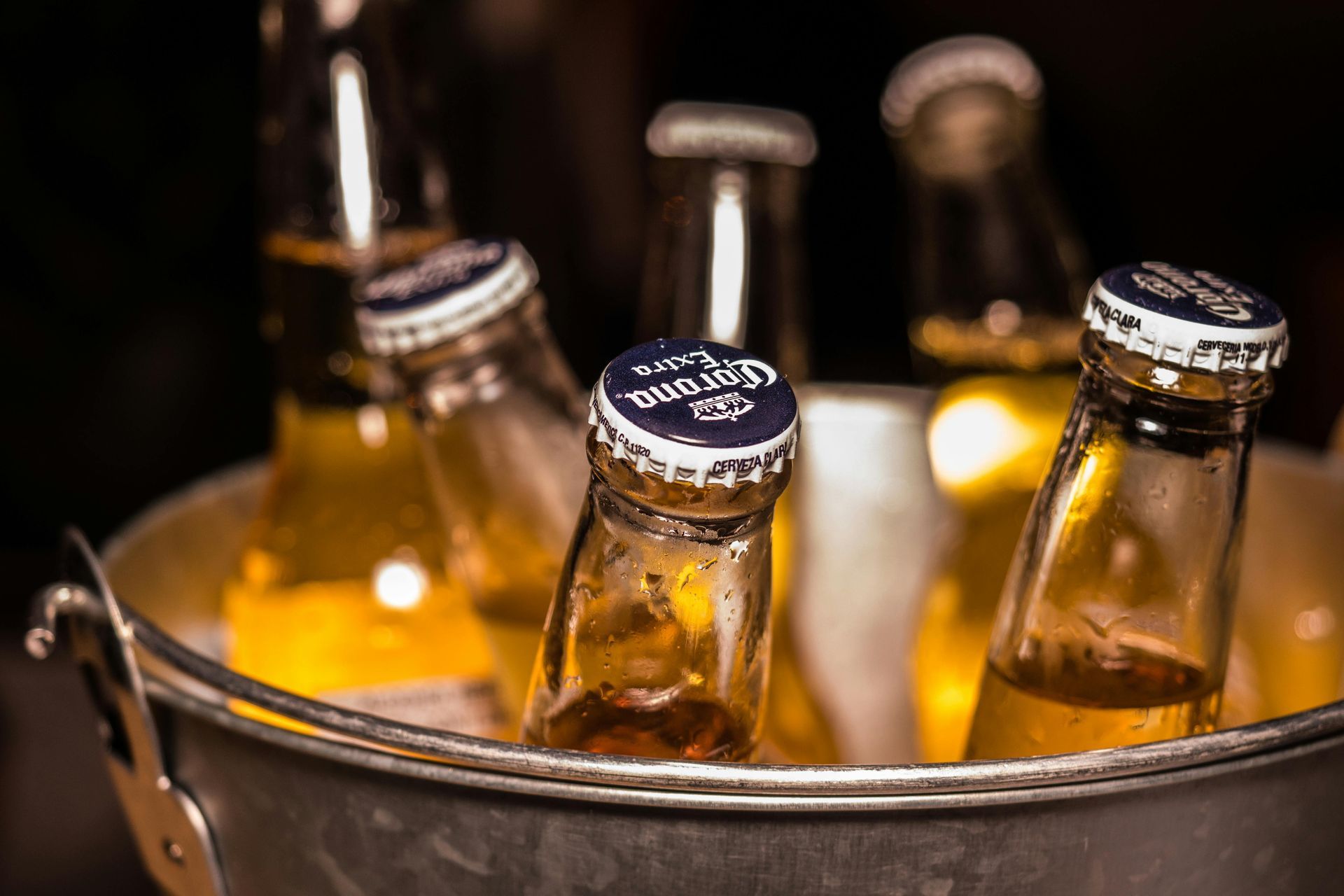How Bars And Cantinas Are Hubs For Sex Trafficking: What You Need To Know🦋
Sex trafficking is happening all around us, whether or not we are fully aware of it. Even more shocking, victims may not even realize they are being trapped, since traffickers sometimes use more subtle manipulation tactics like fear or guilt to control their victims. In more extreme cases, they also use force to exploit victims.
Traffickers frequently use
bars and cantinas as crime hubs to target vulnerable people and mask other illegal activities since bar workers are often unaware of what signs to watch out for.
In this post, you'll learn more about how traffickers trap their victims, what signs to look for, and how to help if needed.
Key Takeaways
- Sex traffickers frequent bars and cantinas because dim lighting, loud environments, and weak security make it easy to commit crimes.
- Use of force, fraud, or coercion are a few ways that they control their victims. Minors under 18 are considered trafficking victims by law.
- Victims may display fearful behavior or have injuries. You may notice staff living on-site, or minors working in inappropriate roles.
- Training programs for bar staff and partnerships with law enforcement can help stop sex trafficking.
- If you suspect trafficking, call the National Human Trafficking Hotline (1-888-373-7888).
Understanding Sex Trafficking
Sex trafficking affects millions of people all over the world. Victims are manipulated in a variety of ways including fear, lies, threats, and force, and then exploited by their traffickers.
Definition of sex trafficking
Sex trafficking occurs when someone uses force to make a person perform a commercial sex act. A "commercial sex act" can be defined as any sexual activity where something of value, for example, money, food, or shelter, is exchanged.
If the victim is a child under the age of 18, no proof of coercion is needed...they are automatically considered victims.
The Trafficking Victims Protection Act (TVPA) of 2000 and the Justice for Victims of Trafficking Act (JVTA) of 2015, recognize these crimes as recruiting, transporting, or trapping individuals through lies and abuse.
It's also important to note that both foreign nationals and U.S. citizens can become potential victims of these crimes since it so easily thrives in popular social environments like bars and cantinas.
The role of force, fraud, and coercion
Sex traffickers trap their victims in a number of ways. Generally they use force, threats of violence, or possibly even harm the victim's family members to gain control. Other tactics might include making
false promises of a better life
or luring people into dangerous situations by promising employment.
Once captured, traffickers may use abuse, debt bondage, or fear to keep their victims trapped. Let's explore how bars and cantinas play a dangerous role in the industry of sex and child sex trafficking.
Why Bars and Cantinas Are Targeted
When it comes to trafficking, criminals are usually seeking out places where they can easily hide their crimes. This makes bars and cantinas popular hubs for traffickers.
Vulnerabilities in these establishments
Environments like bars often lack strict regulations, making them the perfect breeding ground for criminal activities like human trafficking. Traffickers take advantage of the loud music, dim lighting, limited security, and untrained staff to conduct their illegal activities.
You may notice employees living on-site or under the control of managers...some even acting as guards. This set up helps traffickers to subtly exploit their victims without drawing too much attention to their crimes.
Victims may appear scared, bruised, or very young, yet they won't seek out help due to fear. As one survivor was quoted:
I didn’t know how to ask for help; he made me believe I couldn’t leave.
Role of traffickers in exploiting these spaces
Traffickers use bars and cantinas to lure in vulnerable people with false promises of relationships, jobs, or money, then isolate them, making them helpless. Relationships may become abusive and keep victims trapped through fear, force, or substance abuse.
Bars are pooly monitored spaces where traffickers prey on vulnerable individuals like minors or those needing money. Traffickers blend in easily in these places, making it harder for them to be identified by law enforcement agencies.
It's important to know what signs to look for if you find yourself in a bar or cantina. Let's go over some of these red flags next.
Recognizing Red Flags of Sex Trafficking
To start, you may notice staff and customers exhibiting unusual behavior. Pay attention to behavior or activities that don’t make sense.
Signs among patrons and staff
Bars and cantinas are convenient places for dangerous crimes. Here are some signs to watch for when out at bars in Michigan:
- Look for bar goers who appear to be controlled by someone else. Signs include avoiding eye contact, nervous mannerisms, or acting withdrawn. A "pimp" or manager might watch them closely.
- Staff members may seem fearful or overly submissive to a boss. They could be victims of human trafficking or forced labor.
- Observe any unusual payment methods like cash only transactions or frequent tipping of certain employees by the same person.
- Watch out for minors being served alcohol or in inappropriate situations.
- Notice if someone avoids communication unless they are given permission. This could signal an abuse of power or involuntary servitude.
- Pay attention to staff living at the workplace. This is common among massage parlors, strip clubs, and domestic servitude cases involving forced labor practices.
- Look for physical injuries like bruises, scars, or exhausted bar patrons or staff. These are clear signs of sexual abuse or a potential trafficking situation.
Behavioral and physical indicators
Signs of sex trafficking are easily to miss in the bar scene. Watch closely for the behaviors and physical clues below to help identify possible victims.
- Avoiding eye contact or acting scared around others are clear signs. This fear is caused by threats from human traffickers or "intimate partners."
- Some individuals may speak like as if they have memorized their lines, or they may seem unsure of what to say if asked personal questions.
- Victims often display bruises, burns, or other common sex industry injuries that seem unexplained or hidden on purpose.
- Look for workers or patrons who seem unwilling to talk openly about their work hours or how much they make.
- Take notice if someone appears fully dependent on someone else for food, money, and basic needs. They may be in control of a guard or manager.
- Youth working in bars is a big red flag. Child victims under 18 years of age are often forced into commercial sexual exploitation.
- If an individual appears drugged, confused, or unusually tired all the time, this may be due to coercion tactics.
These are all signs that victims of human trafficking are being exploited and you must take fast action in order to protect and ensure public safety in your local area.
Prevention and Intervention Strategies
Training bar staff and partnering with local law enforcement in Detroit can make a huge difference in catching the warning signs of trafficking and help protect vulnerable individuals.
Training for staff and management
Sex trafficking is a global crime that is practiced in bars and cantinas worldwide, however, properly training staff and management on identifying the signs of trafficking can help to stop it.
- Employees can learn to watch for warning signs like fear or unusual behavior in staff and bar goers.
- Enrolling in programs like "Human Trafficking 101" can further educate them about labor trafficking, sexual assault, and domestic violence.
- Educate staff on how fraud and coercion can be used against victims of human trafficking.
- Explain the impact COVID-19 has had on victims, especially areas like Latin America.
- Team up with anti-trafficking organizations like Hope Against Trafficking or social services to stay in the loop about new resources for sex trafficking victims.
- Inform workers about the National Human Trafficking Hotline so they can quickly report suspected human trafficking cases.
- Encourage bars to connect with local law enforcement, NGOs, and human trafficking task forces.
- Make staff aware of legal responsibilities through the Department of Labor or Department of Justice.
- Emphasize that knowing and reporting the signs can save victim's lives and improve national security.
Collaboration with law enforcement and NGOs
Sex trafficking incidents can be reduced when bars work with law enforcement. These collaborations make it easier to protect human trafficking victims and prevent future abductions.
- Sharing local tips with police can help save lives. If you see signs of trouble, call the National Human Trafficking Hotline at 1-888-373-7888, or text 233733.
- Many official government organizations work to locate traffickers. The United States government website Justice.gov has details about criminal prosecutions and various laws that combat human trafficking.
- Nonprofits like Hope Against Trafficking in Michigan give survivors of human trafficking the care that they need.
- Training programs educate workers how to identify trafficking signs quickly. This victim-centered approach helps catch trafficking earlier.
- Communicating with the Attorney General's office will ensure quick action against possible child labor incidences.
- The National Center for Missing Persons works closely with service providers and social media experts to track victims online.
- International law teams also work to dissolve cross-border crime networks linked to bars.
These critical partnerships give businesses owners the tools to combat trafficking locally, while helping survivors rebuild their lives successfully.
Conclusion
Sex trafficking is happening regularly in local Michigan businesses, especially in bars and cantinas. These environments make it easy for traffickers to exploit their victims. By learning the signs, supporting staff training, partnering with local groups, or donating to anti-trafficking organizations, you can help protect lives.
FAQs
1. How are bars and cantinas connected to sex trafficking?
Bars and cantinas can be used as a base for recruiting or exploiting victims of human trafficking. Traffickers use force, threats, or manipulation to control victims.
2. What should business owners know about preventing sex trafficking?
Business owners can review resources like the National Action Plan and other anti-trafficking official websites. Their staff should be trained to recognize signs of trafficking and report it promptly.
3. Are there common signs of a victim of human trafficking in these places?
Yes, victims may show fear, avoid eye contact, or may appear to be controlled by someone else. These cases often involve sensitive information that requires careful handling when reported.
4. Where can I find reliable information on sex trafficking cases?
You can visit official websites or read press releases from trusted organizations involved in combating sex trafficking for further updates.








